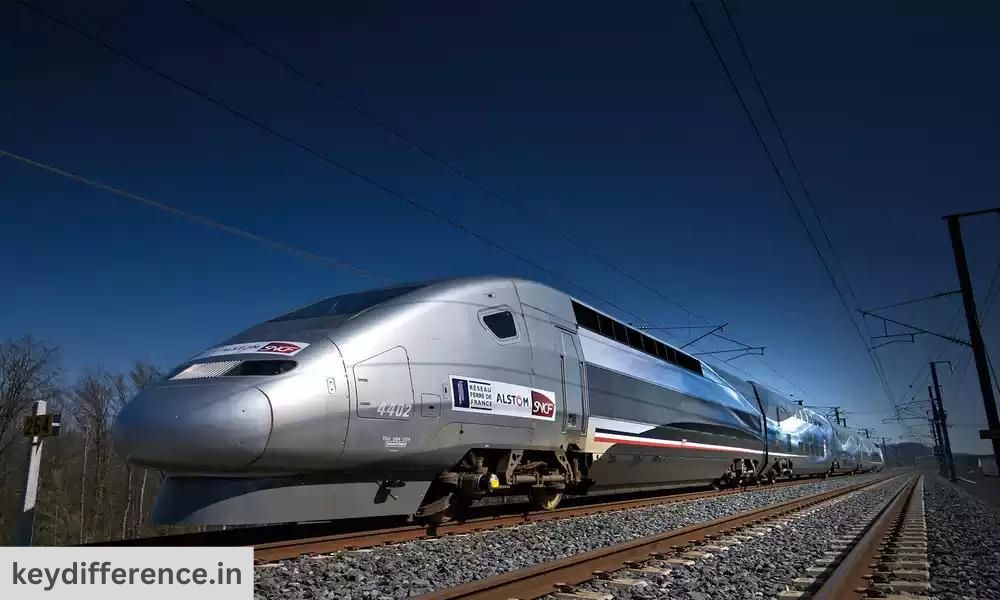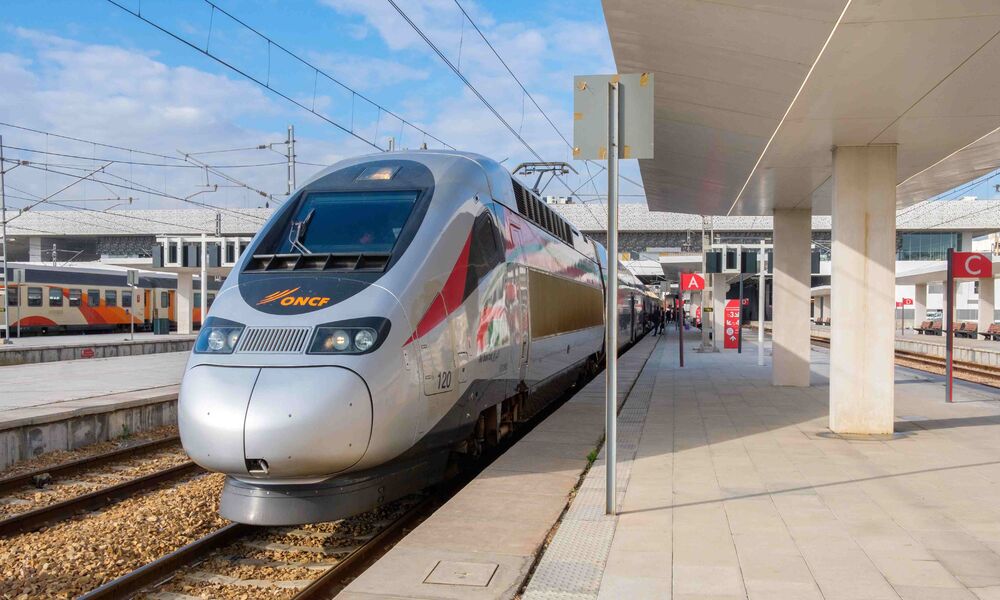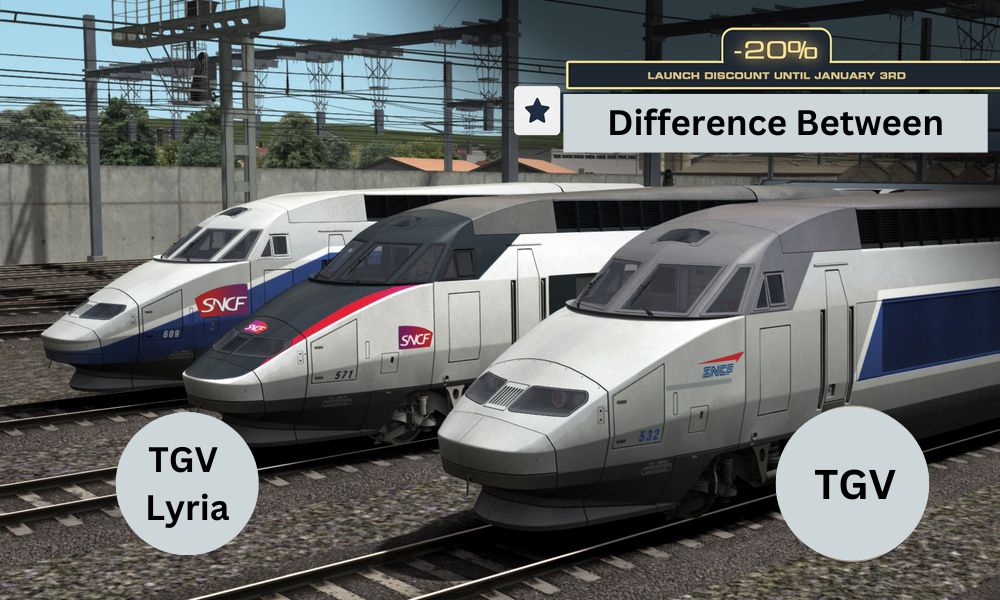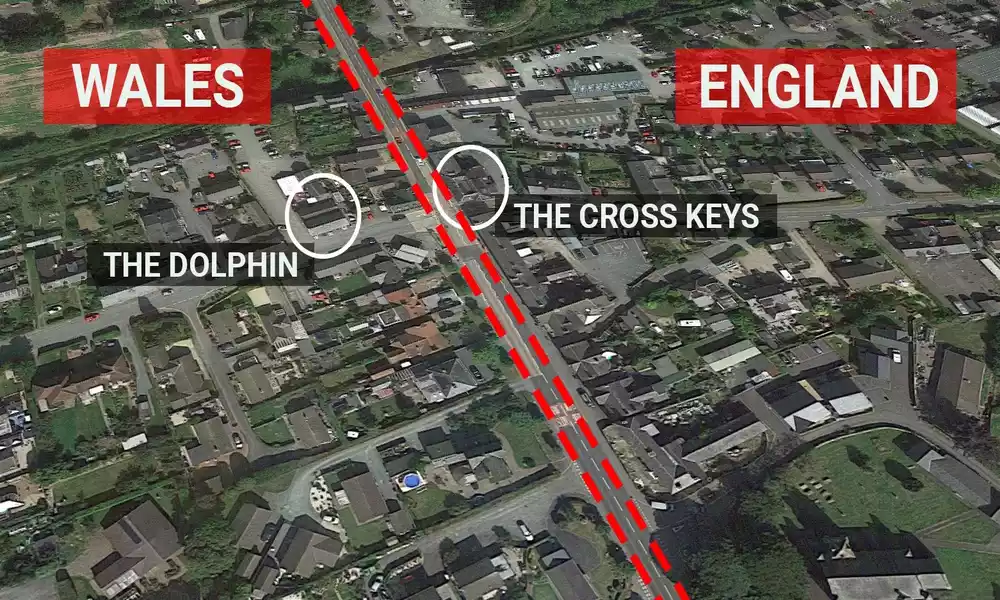Introduction
High-speed rail transportation has transformed how people travel, providing swift and cost-efficient connectivity between cities and countries.
Leading this charge are TGV (Train a Grande Vitesse) and TGV Lyria; two services widely praised for their cutting-edge technology, fast travel times, and passenger comfort; however, there are key differences between them that warrant exploration.
TGV, operated by the French national railway company SNCF (Societe Nationale des Chemins de Fer Francais), represents high-speed rail travel in France.
Since its debut in 1981, this iconic railcar has become a symbol of modern transportation; linking major French cities as well as international destinations.
TGV Lyria is the result of a partnership between SNCF and Swiss Federal Railways (SBB-CFF-FFS), offering travelers convenient rail travel between France and Switzerland.
Travelers seeking seamless and efficient journeys between both nations will find TGV Lyria the ideal service provider.
Understanding the differences between TGV and TGV Lyria is vitally important for travelers and rail enthusiasts alike.
In this content outline, we explore all of the factors that set these services apart, from ownership to network coverage, service offerings, and international connections – not forgetting all of their shared features and benefits that make both an outstanding option for high-speed rail travel.
Join us as we journey together through TGV and TGV Lyria services, exploring their similarities and distinctions while uncovering those qualities which set each apart and distinguish each service from one another.
What is TGV?
TGV stands for “Train a Grande Vitesse,” or high-speed train in English. Operating out of France and connecting multiple domestic and international destinations, the TGV service is well known for its quick travel times, cutting-edge technology, and pleasant passenger experience.
SNCF (Societe Nationale des Chemins de Fer Francais), France’s national railway company, first introduced the TGV system in 1981 and has become an icon of modern transportation throughout France as well as setting an example for high-speed rail systems worldwide.
TGV trains are designed to travel at exceptionally high speeds – up to 320 km/h (200 mph). These high-speed electric trains use dedicated tracks designed for this specific use and boast sleek designs to minimize air resistance and ensure optimal performance.
TGV trains place great value on passenger comfort and amenities. From standard to first and business class seating with spacious and comfortable seats; to restrooms, luggage storage areas, power outlets, and Wi-Fi connectivity; they may also feature catering services that provide meals, snacks, or beverages during their journey.
TGV connects France with neighboring countries such as Belgium, Luxembourg, Germany, Switzerland, Italy, and Spain, providing efficient travel across regions that would otherwise remain far apart. TGV has played an essential role in regional development, tourism, and effective transportation – making travel across these borders more accessible.
TGV rail travel has long been recognized for its many advantages, including reduced travel times and environmental sustainability compared to air travel, economic stimulation through improved connectivity, and continuous development and expansion that serve to demonstrate its significance as high-speed rail transport technology advances.

What is TGV Lyria?
TGV Lyria is a high-speed rail service between France and Switzerland operated in partnership by France’s SNCF (Societe Nationale des Chemins de Fer Francais) and Swiss Federal Railways SBB-CFF-FFS.
TGV Lyria provides efficient yet comfortable train connections between major cities of both countries, specifically catering to travelers between major metropolitan hubs in both countries.
Since its creation in 1984, TGV Lyria has become an increasingly popular means of travel between France and Switzerland for individuals traveling between both nations. Combining expertise from both SNCF and SBB’s resources to deliver an easy cross-border journey experience.
TGV Lyria trains have many similarities with regular TGV trains in terms of technology, speed, and comfort. These high-speed trains can reach speeds of 320 km/h (200 mph) and are known for their efficiency and reliability.
TGV Lyria offers modern amenities including comfortable seating arrangements with onboard catering services, power outlets, and Wi-Fi connectivity – similar to its counterpart.
TGV Lyria provides convenient rail connections between several key cities in France and Switzerland, such as Paris, Lyon, Marseille, and Dijon in France; Geneva Lausanne Basel Zurich in Switzerland are among the more popular Swiss destinations served.
Travelers can conveniently commute between these locations via multiple daily connections provided by TGV Lyria.
TGV Lyria stands out as an exceptional travel experience due to its commitment to offering first-class amenities and services for passengers, such as spacious seating, complimentary meals, and access to designated lounges at certain train stations.
TGV Lyria plays an essential part in fostering cultural, economic, and tourist exchange between France and Switzerland. Offering an eco-friendly alternative to air travel with shorter travel times and reduced environmental impact.
Through collaboration between SNCF and SBB, it ensures high levels of service between these two nations that meet both business travelers and leisure tourists’ needs.
Overall, TGV Lyria represents an exceptional example of cooperation between two national railway companies to provide high-quality and convenient high-speed rail service between France and Switzerland.

Comparison Table of TGV and TGV Lyria
Below is a comparison table highlighting the key differences between TGV (Train à Grande Vitesse) and TGV Lyria:
| Aspect | TGV | TGV Lyria |
|---|---|---|
| Operating Company | SNCF (French national railway company) | SNCF and Swiss Federal Railways (SBB-CFF-FFS) partnership |
| Network Coverage | Domestic services within France extend to international destinations | France-Switzerland cross-border connections |
| Service Offerings | Standard, first-class, and business-class seating | Standard and first-class seating with a focus on a premium experience |
| Ticketing and Pricing | Ticket options with different fare structures | Ticket options with flexible fares and discounts for certain age groups |
| Catering Services | Onboard catering services available | Onboard catering services with an emphasis on premium offerings |
| International Connections | Extends to neighboring countries (Belgium, Luxembourg, Germany, Switzerland, Italy, Spain, etc.) | Dedicated service connecting France and Switzerland |
| Cross-Border Regulations | Varies based on the specific international connection | Compliance with French and Swiss customs and immigration procedures |
| Collaboration | Collaboration with international rail operators for cross-border services | The partnership between SNCF and Swiss Federal Railways |
| Frequency of Service | Frequent and extensive service schedule | Multiple daily connections between key French and Swiss cities |
It’s important to note that while TGV and TGV Lyria share similarities in terms of train technology, comfort, and speed, they differ in their network coverage, focus, and collaboration.
TGV has a broader reach, encompassing domestic and international destinations, while TGV Lyria specializes in providing high-speed rail services specifically between France and Switzerland.
Ownership and management
Ownership and management structures play a pivotal role in understanding the differences between TGV and TGV Lyria services.
Here is a breakdown of ownership and management for both services:
TGV: TGV is operated by SNCF (Societe Nationale des Chemins de Fer Francais), France’s national railway company. As a state-owned entity, SNCF has been responsible for overseeing TGV operations from its inception.
As a public entity, it reports to and follows all government regulations and guidelines when managing all aspects of operation such as scheduling, ticketing, maintenance, and customer service for TGV trains.
TGV Lyria:
TGV Lyria is a partnership between two railway companies: SNCF (French national railway company) and Swiss Federal Railways (SBB-CFF-FFS). SNCF represents France while SBB-CFF-FFS represents Switzerland; this alliance was conceived to establish an exclusive high-speed rail service between these countries.
As part of their collaboration, both SNCF and SBB-CFF-FFS contribute their expertise, resources, and management capabilities. TGV Lyria ownership is shared between them both, with each taking responsibility for running it efficiently ensuring smooth operations and high-quality service delivery.
The partnership between SNCF and SBB-CFF-FFS represents an international collaboration focused on providing seamless travel experiences for passengers traveling between France and Switzerland. Through a joint management approach, both companies can maximize their respective strengths to guarantee TGV Lyria as an exceptional high-speed rail service.
Notably, while SNCF’s expertise and involvement are evident in both TGV and TGV Lyria services, its partnership with SBB-CFF-FFS specifically meets the needs of travelers between France and Switzerland, providing them with a dedicated cross-border connection service.
Network and Coverage
TGV and Lyria networks differ significantly in terms of geographical reach and the destinations they service, so here is an overview of both networks:
TGV:
TGV is an extensive train network that connects major domestic and international destinations. Within France, the TGV serves many major cities and regions, providing high-speed rail connectivity across the nation.
Notable destinations served by this domestic network include Paris, Lyon, Marseille, Bordeaux, Strasbourg Lille & Nantes among others allowing passengers to easily travel between these key locations and regions quickly.
TGV provides international connections across its route network. TGV serves destinations in Belgium (such as Brussels), Luxembourg, Germany (Frankfurt and Munich), Switzerland (Geneva, Zurich, Basel), Italy (Milan and Turin), and Spain (Barcelona and Madrid). TGV facilitates efficient cross-border travel by linking France with various European cities efficiently.
TGV Lyria:
TGV Lyria specializes exclusively in connecting France and Switzerland through high-speed rail travel services for passengers traveling between these two nations. TGV Lyria connects major French cities such as Paris, Lyon, and Marseille with key Swiss cities like Geneva Lausanne Basel Zurich
The TGV Lyria network provides efficient and convenient transportation between France and Switzerland for those in search of quick commute times between these two nations. Offering multiple daily connections, passengers are able to travel swiftly between them.
TGV Lyria offers high-speed rail services across France and Switzerland with a specialization on crossing-border connections, ensuring dedicated high-speed services dedicated to this cross-border route.
Service offerings
TGV and TGV Lyria offer services that cover various aspects, including seating options, onboard amenities, catering services, and ticketing services.
Here’s an overview of their respective service offerings:
TGV Seating Options: TGV offers various seating classes to meet the preferences and needs of passengers. These typically include standard class, first-class, and business-class options with each class providing comfortable seating arrangements that provide ample legroom as well as recliner seats.
Onboard Amenities: TGV trains feature modern amenities to enhance passenger experiences, including power outlets at each seat, Wi-Fi connectivity, and audio/video entertainment systems. Some trains also provide dedicated family areas or spaces for those with reduced mobility.
Catering Services: TGV offers onboard catering services with an extensive selection of meals, snacks, and beverages available for purchase by passengers. They can choose from hot meals to sandwiches, salads, and desserts in addition to hot and cold beverages available for sale.
TGV provides various ticketing options to meet travelers’ unique travel needs. This may include one-way or round-trip tickets as well as flexible fare structures with options such as non-flexible and semi-flexible fares. Furthermore, discounts may be provided for children, seniors, or groups.
TGV Lyria Seating Options: TGV Lyria offers two seating classes – standard class and first class. Both provide comfortable seating with sufficient legroom, while first class provides additional amenities such as wider seats, more space, and enhanced privacy.
Amenities onboard TGV Lyria trains include amenities to enhance passenger comfort, such as power outlets at each seat, reading lights, and overhead luggage storage space. Some trains even provide Wi-Fi connectivity so travelers can stay connected during their journey.
Catering Services: TGV Lyria provides its passengers with premium onboard catering services, featuring gourmet offerings as well as regional specialties. First-class passengers may receive complimentary meals; while standard-class passengers have the option of purchasing them.
TGV Lyria offers flexible ticketing solutions, enabling passengers to select from various fare structures based on their travel needs and preferences.
These could range from non-flexible tickets with predetermined travel dates and times, all the way up to semi- or fully flexible tickets which provide greater rescheduling or refunding flexibility.
TGV and TGV Lyria strive to offer passengers a relaxing and pleasurable travel experience, offering amenities tailored specifically to meet their individual requirements.
Ticketing and pricing
TGV and Lyria ticketing and pricing structures vary based on factors like fare options, flexibility, and discounts available to them.
Below is an overview of ticketing and pricing structures for both services:
TGV Offers Varied Fare Options
TGV provides various fare options to suit passengers’ travel plans and needs, such as one-way tickets, round-trip tickets, or open return tickets that provide flexibility.
Flexible Fares: TGV fares may depend on your desired level of flexibility. Non-flexible tickets tend to be less costly but only offer fixed travel dates and times; refund options may also be limited or unavailable altogether. Semi-flexible or fully flexible tickets provide greater options for rescheduling or canceling journeys, although they may come at a higher price tag.
Discounts: TGV may offer discounted fares to certain passenger categories. This could include discounted tickets for children, youths, seniors, or groups traveling together; promotional fares or packages may also be made available from time to time.
TGV allows passengers to reserve seats in advance for their desired train, ensuring they can secure one and making travel plans easier. Seat reservations can often be included within ticket costs or purchased as an add-on option.
TGV Lyria provides several fare options to meet different travel requirements, from non-flexible tickets with fixed travel dates and times to semi-flexible tickets allowing some rescheduling flexibility, to fully flexible tickets that allow greater freedom in changing travel plans.
Flexibility: TGV Lyria tickets offer various levels of flexibility for passengers to select the option that best meets their needs. Non-flexible tickets tend to be less costly but may come with certain restrictions regarding changes or refunds; semi-flexible and fully flexible tickets offer greater rescheduling or cancellation options but may incur an increased price tag.
Discounts: TGV Lyria may offer discounts for specific passenger categories, including children, seniors, or groups. In addition, there may be special fares or offers available during certain periods or routes.
Seat Reservation: TGV Lyria tickets typically include seat reservations to ensure passengers can guarantee themselves an assigned seat on their journey.
Note that ticketing and pricing details can differ depending on factors like travel dates, availability, and demand. Passengers should refer to the official websites of railway companies for accurate and up-to-date information about ticketing options, pricing structures, discounts, or promotions that might apply.
Classes and seating arrangements
TGV and TGV Lyria offer passengers multiple classes and seating arrangements to meet their travel preferences.
Here is an overview of these services offerings in terms of classes and seating arrangements:
TGV:
Standard Class, also referred to as second class, is the most frequently available class on TGV trains. Featuring comfortable seating with plenty of legroom and features like armrests, tray tables, and reading lights; standard class passengers also enjoy onboard amenities such as catering services, power outlets, and Wi-Fi connectivity.
First Class: For travelers seeking an upgraded travel experience with more amenities and enhanced comfort, first class is often a better option. It typically provides wider seats, more legroom, greater privacy, dedicated lounges at select train stations, complimentary meals or refreshments, and other premium services that may make this class worthwhile.
Business Class (On Select Routes): Certain TGV trains may offer a separate business class car on certain routes. Business travelers traveling in this car will find amenities and services tailored specifically for business travelers such as extra legroom, ergonomic seating, individual workspaces, and dedicated power outlets.
TGV Lyria offers comfortable seating with enough legroom and amenities for an enjoyable journey, including armrests, tray tables, and reading lights for passengers in its standard class. Catering services may also be offered on board for purchase.
First Class: TGV Lyria’s First Class provides an upgraded travel experience with enhanced amenities and increased comfort, such as wider seats, more legroom, priority boarding, complimentary meals, and access to exclusive lounges at select train stations.
TGV and Lyria seating arrangements typically follow a row-by-row layout with seats facing forward. Depending on their model, some trains may also offer seating groups of two or four facing one another to create more social or family-friendly arrangements.
Passengers have the option of selecting their class and seating preferences when making ticket reservations, taking into account factors like comfort, amenities, and budget.
Conclusion
TGV and TGV Lyria are high-speed rail services that provide efficient and comfortable travel experiences, both offering train technology and passenger amenities that set them apart. While their similarities extend across these aspects, there are also key distinctions that set each one apart from one another.
TGV, operated by SNCF, is an acclaimed high-speed rail service in France that boasts an expansive network, linking domestic destinations as well as various international connections.
Offering various seating classes and onboard amenities – as well as catering services – TGV caters to travelers of various traveler profiles while offering flexible ticketing options with discounted fares available to certain passenger categories.
Recap of the key features and benefits of TGV
Recapping TGV’s key features and benefits:
TGV is known for its fast travel capabilities, making reaching your destinations quickly and efficiently much faster than with traditional modes. Reaching speeds up to 320 km/h (200 mph), TGV significantly shortens travel times.
Extensive Network: TGV boasts an expansive network, connecting domestic destinations in France to numerous international connections and offering convenient access to major cities and regions, making travel throughout France and beyond more efficient and accessible.
Comfortable Seating: TGV offers different seating classes, including standard, first class and sometimes business class seats, which feature ample legroom, reclining seats and onboard amenities to provide passengers with an enjoyable travel experience.
Onboard amenities: TGV trains feature modern amenities to maximize passenger comfort. This may include power outlets at every seat, Wi-Fi connectivity, audio/video entertainment systems, and dedicated family seating areas so passengers stay connected and entertained throughout their journey.
Catering Services: TGV offers onboard catering services, offering passengers access to a selection of meals, snacks, and beverages for purchase – such as hot meals, sandwiches, salads, and desserts as well as hot and cold beverages.
TGV provides flexibility in ticketing: With one-way or round-trip tickets and various fare structures tailored to flexibility preferences, passengers can select their ticket type accordingly. Furthermore, special discounted fares may be available for certain passenger categories or promotional offers may also be made available.
TGV provides efficient connections: TGV trains connect major cities and regions within France as well as neighboring countries for efficient cross-border connections, offering passengers easy travel between Belgium, Luxembourg, Germany, Switzerland, Italy, and Spain.
Collaboration with international operators: TGV works closely with international rail operators to provide seamless cross-border services, guaranteeing seamless connections and coordinated services when traveling between various countries.
TGV provides efficient and enjoyable journeys while exploring domestic and international destinations with their high-speed travel, extensive network coverage, comfortable seating arrangements, onboard amenities, flexible ticketing options, and efficient journey planning. It is the ultimate combination for efficient yet enjoyable journeys!
Acknowledgment of TGV’s impact on rail transportation
Since its introduction, the TGV has had a profound impact on rail transportation. Here is our way of paying tribute to its significant contributions:
Revolutionizing high-speed rail travel: The TGV revolutionized high-speed rail travel by setting new standards of speed, efficiency and comfort. It proved the viability of high-speed train technology – inspiring similar systems worldwide.
Reduced travel times: Due to its fast operating speeds, the TGV has significantly cut travel times between major cities and regions, making previously remote destinations more accessible and making day trips and business travel more feasible.
Increased rail market share: Thanks to its success, the TGV has led to a considerable surge in rail market share for medium-distance travel. It offers travelers more convenient and eco-friendly alternatives than air travel – thus expanding rail markets further still.
Regional Development and Connectivity: The TGV has played a pivotal role in regional development by connecting smaller towns and cities to major economic centers, spurring economic expansion, tourism development, and cultural exchange across previously underserved regions.
Modal Shift and Sustainability: The TGV has fostered an overall shift from air and road travel to rail travel, thus reducing carbon emissions while alleviating congestion on highways and airports. Furthermore, its focus on sustainability and energy efficiency make it a more environmentally friendly option for travelers.
Technological Advancements and Innovation: The TGV project has broken new ground in terms of rail technology and engineering, inspiring advances in train design, infrastructure design, signaling systems and safety measures – providing enormous advantages to all in the rail industry.
International Reach: The success of the TGV has encouraged other nations to invest in high-speed rail systems, serving as a model for similar networks outside France. Its impact has extended far beyond France itself.
Iconic Cultural Symbol: The TGV has become an iconic cultural icon representing French engineering prowess and innovation, symbolizing modernity, speed, and progress.
The TGV’s impact on rail transportation cannot be understated. It has revolutionized how people travel, enhanced regional development, reduced environmental impacts and established global high-speed rail standards that continue to define its legacy today.
Consideration of future opportunities and challenges for TGV
As it looks forward, the TGV continues to face both opportunities and challenges in its journey towards its future.
Here is a glimpse at these factors for the TGV:
Expansion of High-Speed Rail Network:]
There is significant potential to expand France’s high-speed rail network further both domestically and internationally, connecting additional cities within France while expanding routes to underserved regions or establishing cross-border connections with neighboring countries.
Technological Advancements: With advances in high-speed rail technology comes an opportunity for the TGV to improve its efficiency, reduce energy usage and enhance passenger comfort.
Implementation of new technologies such as advanced signaling systems, train design upgrades, and sustainable power sources could further elevate passenger experiences on board the train.
Enhancing connectivity and multimodal integration: The TGV should explore ways of improving its connection to other modes of transportation, such as seamless transfers to local trains, buses, and airports. Integrating digital platforms or ticketing systems could simplify travel experiences and ensure more seamless multimodal journeys.
Sustainable Initiatives: The TGV can make strides to enhance its sustainability practices, such as reducing greenhouse gas emissions, investigating alternative energy sources, and adopting eco-friendly measures within its infrastructure and operations. Emphasizing its environmental advantages could draw in more eco-conscious travelers.
Challenges: Infrastructure Development: Expanding the TGV network requires considerable investments in infrastructure. Constructing new tracks, upgrading existing lines, and addressing capacity restrictions all present unique hurdles that must be navigated carefully in terms of funding, planning, and public acceptance.
Competition from other modes of transport: The TGV must compete with other forms of transportation, particularly budget airlines and private cars, in terms of speed, comfort, convenience, and pricing differentials to remain cost-effective.
To remain cost-efficient the TGV must continue offering advantages like speed comfort convenience whilst considering potential pricing differentials that could arise.
Operational Efficiency and Reliability: Ensuring high levels of operational efficiency and reliability is vital to TGV’s success. Achieve timely departures, mitigating delays, and promptly addressing technical issues are ongoing challenges that need to be monitored and improved upon continuously.
Evolving passenger expectations: Passenger preferences and expectations are constantly shifting, making the TGV an integral component in meeting consumer demands like connectivity needs, digital experiences, and personalized services. Meeting this demand effectively is key to customer satisfaction as well as maintaining its competitive edge.
Addressing challenges and capitalizing on opportunities will be integral to TGV’s future success. By adopting innovative, eco-friendly practices and customer-centric approaches, it will continue to offer efficient yet enjoyable journeys for passengers.





